
Speakers
Keynote Speakers

Professor Haiquan Zhao
Southwest Jiaotong University, China
Experience: Zhao Haiquan, Doctor of Engineering, professor, doctoral supervisor, senior member of IEEE and Chinese Institute of Electronics, academic and technical leader in Sichuan Province, outstanding expert with outstanding contributions in Sichuan Province, winner of Sichuan Outstanding Youth Fund and core member of Sichuan Youth Science and Technology Innovation Team, Won the First Prize of Natural Science of CAA of Chinese Society of Automation in 2019 (ranked 3rd), the second Prize of Natural Science of CAA of Chinese Society of Automation in 2018 (ranked 1st), the second Prize of Science and Technology Progress of the Ministry of Education (ranked 3rd), and the 12th Jeme Tianyou Railway Science and Technology Award - Youth Award. The 9th Jeme Tianyou Science and Technology Award of Ministry of Railways - Jeme Tianyou Special Award of Southwest Jiaotong University, Tang Lixin Outstanding Scholar Award; Executive Director of Provincial Science and Youth Federation, member of Sichuan Youth Federation, Executive director of Chengdu Knowledge Association. Serves on the editorial board of international journals such as Signal Processing.
Speech Title: Robust adaptive filtering algorithms for EIV models
Abstract: With the rapid development of economy, society, science and technology, the field of digital signal processing is also developing rapidly. As an important part of digital signal processing, adaptive filtering has been widely used in many fields. In practical applications, such as when a worker samples the input, errors may occur, causing the input signal to suffer from noise interference. The total least-squares (TLS) method is an effective way to deal with the errors-in-variables (EIV) model. All are based on Gaussian background noise design, and performance deteriorates in the Non-Gaussian noise environment. This topic shares our recent research findings how to enhance the robustness of algorithms against impulsive noise.
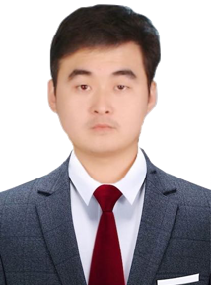
Assoc. Prof. Congduan Li
Sun Yat-sen University, China
Experience: Congduan Li (Senior Member, IEEE) received the B.S. degree from the University of Science and Technology Beijing, China, in 2008, the M.S. degree from Northern Arizona University, AZ, USA, in 2011, and the Ph.D. degree from Drexel University, PA, USA, in 2015, respectively, all in Electrical Engineering. From October 2015 to August 2018, he was a Post-Doctoral Research Fellow with the Institute of Network Coding, The Chinese University of Hong Kong and with the Department of Computer Science, City University of Hong Kong. He is currently an Associate Professor with the School of Electronics and Communication Engineering, Sun Yat-sen University, China. His research interests lie in the broad areas related with networks, such as coding, security, wireless, storage, and caching.
Speech Title: Deep Learning Empowered Semantic Communications
Abstract: Recently, the rapid development of deep learning has provided strong support for the implementation of semantic communication. A noteworthy issue is the application of the knowledge base. Deploying and generating the knowledge base necessitate substantial caching resources, and requesting it frequently may increase communication overhead. We consider the issue of improving the performance of text semantic communi_x0002_cation systems in the context of a small-scale knowledge base, and propose a system based on entity information enhancement. In particular, we design an entity recognizer to identify the entity information in the source text and enhance the information via secondary coding. Simulation results demonstrate that the proposed system can effectively extract the entity information and achieve performance improvement at the receiver.
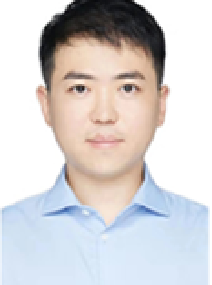
Associate Professor Lei Chen
Shandong University, China
Experience: Lei Chen received the B.Sc. and M.Sc. degrees in electrical engineering from Shandong University, Jinan, China, and the Ph.D. degree in electrical and computer engineering from University of Ottawa, Ontario, Canada. He is currently an Associate Professor with the School of Information Science and Engineering, Shandong University, China. His research interests include image processing and computer vision, visual quality assessment and pattern recognition, machine learning and artificial intelligence. He was the principal investigator of projects granted from the National Natural Science Foundation of China, National Natural Science Foundation of Shandong Province, China Postdoctoral Science Foundation, etc. He has published more than 40 papers on top international journals and conferences in recent years including IEEE TIP, Signal Process., ICME, etc. He was awarded the Future Plan for Young Scholars of Shandong University. He served for many international conferences including the ICIGP 2021, CSAI2022, MLCCIM2022, and ICIVC 2023 as Program Chair, Technical Chair or Publicity Chair.
Speech Title: Perceptual image quality assessment based on human visual system
Abstract: With the rapid development of modern technology, people have higher expectations for the visual effects of images. The reference-less image quality assessment method guided by the human visual system is more in line with the way humans perceive the world. In order to address the ill-posed nature of two-dimensional no reference image quality assessment and make it closer to the performance of full reference or reduced reference image quality assessment, we will report a NR-IQA method based on non-adversarial visual restoration networks. Moreover, we will report our method of combining binocular visual saliency weighting in the assessment of stereoscopic image quality. This method combines the 2D saliency map of a stereo image with the depth saliency map of the left and right views in a linearly weighted manner to obtain a 3D saliency map and assigns weights based on the 3D saliency information to obtain the final prediction score. The performance of the proposed method has been evaluated on two widely used databases (LIVE 3D Phase I and LIVE 3D Phase II). The experimental results demonstrate the effectiveness and superiority of our proposed method compared to other related methods.
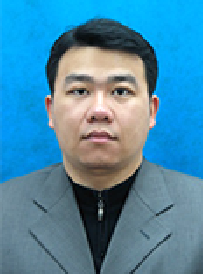
Prof. Jun Tao
Jianghan University, China
Experience: He has long been engaged in frontline teaching and research, with his primary research areas encompassing computer vision, 3D reconstruction, image processing, virtual reality, and computer gaming. Recently, he has taken the lead on 20 teaching and research projects, including 12 at the provincial level and 8 at the municipal level, and has also been involved in various educational and research initiatives. He has lately published over 40 academic papers, including 20 indexed in EI, 20 in ISTP, and several in global academic conferences. He has served as a reviewer for 8 international conferences and has been honored with multiple awards, including the Second Prize of the 13th Natural Science Excellent Academic Papers of Hubei Province in 2010, the Third Prize of Natural Science Excellent Academic Papers in the Wuhan City Natural Science Awards of the first edition in 2010 and the third edition in 2013, the Second Prize of Excellent Papers of Education Science “Twelfth Five-Year Plan” in Wuhan City in 2015, and the Third Prize in the same category in 2013. He received the Wuhan City Doctoral Subsidy Allowance in 2009 and was a domestic visiting scholar at Wuhan University in 2013, as well as an international visiting scholar at Bemidji State University from 2014 to 2015 and at Rowan University from 2015 to 2016. He was selected as a technology plan project review expert of the Wuhan Science and Technology Bureau in 2012 and the Department of Science and Technology of Hubei Province in 2018. He was included in the Hubei Provincial Young Technological Morning Light Plan in 2014 and the Wuhan City Young Technological Morning Light Plan in 2015. In 2012, he was awarded the title of Discipline Leader in the ninth batch of Wuhan City.
Speech Title: 3D Measurement of Small Industrial Parts Based on the Camera-Projector System
Abstract: With the development of the photogrammetry and computer science, their theories and skills are applied to all kinds of the industry. The common characteristic of industrial parts is that its surface is sleek, homogeneous and lack of the texture. So the key difficulties in 3D measurement of industrial parts are the matching and the extraction of the suitable texture and the makeup of the 3D model. According to the above difficulties and troubles, the paper proposes a method 3D measuring the small industrial parts on the principle of close-range photogrammetry which advantages are non-touched and accurate. According to the traditional method of the digital camera taking images, the projector is steered so that the projector-camera system is formed. The projector-camera system is composed of a slide projector, a digital camera, a control ground and a computer. The computer controls the other three equipments working together automatically and efficiently. The control ground is a planar grid on a rotating platform. Because of the size of the planar grid, the target industrial parts are relatively small. The planar grid is functioned as the calibration of the slide projector and the digital camera. After calibrated respectively in advance, the projector-camera system is similar with the binocular vision system on the principle of 3D reconstruction. The slide projector can project the texture characteristic onto the surface of the small industrial parts maybe lack of or without real texture suitable for matching. The digital camera takes sequential images of the small industrial parts with the projected texture characteristic. The images are taken from the different orientations when the rotating platform rotates continually. For each space feature point projected on the surface of the small industrial parts, there are two corresponding 2D points existing. One is an image point in one of the image sequences from the digital camera and another is a point in the slide from the projector. Using the image processing method, the image point can be extracted out accurately so that its 2D coordinates are gained. At the same time, the slide point is designed first so that its 2D coordinates are calculated by the known data. The 3D coordinates of the space feature point projected can be computed by the space forward intersection. Using the whole adjustment, the 3D coordinates of all space points projected on the whole surface of the small industrial parts can be computed out entirely and accurately. The precision of 3D coordinates of all projected space points is reached to ±0.1mm and it satisfied with the requirement of close-range photogrammetry and practical applications. The 3D model of the small industrial parts is acquired by connecting all neighbor space points. From the 3D model of the small industrial parts, the 3D measurements required about the small industrial parts are able to realize from it conveniently. The 3D measurement is non-touched so that it is remote and nondestructive. Because of little effect by the space factor or the time factor, the 3D measurement of the small industrial parts is flexible and practical. The 3D measurement of the small industrial parts proposed in the paper is confirmed to be correct and effective entirely by the results of the measuring experiments.
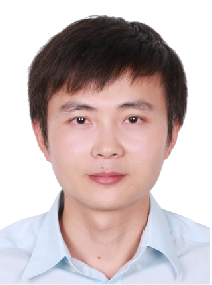
Prof. Bin Liao
Shenzhen University, China
Experience: Liao Bin, Professor, graduate supervisor, doctoral supervisor, Deputy Director of Guangdong Key Laboratory of Intelligent Information Processing. He received his Bachelor's degree in Electronic Information Engineering and Master's degree in Information and Information Processing from Xidian University in 2006 and 2009 respectively, and his Doctor's degree from Department of Electrical and Electronic Engineering, University of Hong Kong in 2013. Mainly engaged in array signal processing, radar signal processing, wireless communication, synaesthesia integration and other research. He was selected as one of the top 2% of global top scientists, one of the "Lifetime Science Influence List", winner of the "Sino-Europe Talent Project" of the National Natural Science Foundation of China and the European Commission, Young Top Talent in Science and Technology Innovation of the "Guangdong Special Support Program", "Liyuan Youqing", an outstanding young teacher of Shenzhen University, and a Class B of Shenzhen Overseas High-level Talents (Peacock Program), Nanshan District "pilot talent" category B winner. He won the second Prize of Natural Science of the Ministry of Education, the Best paper Award of the 21st (Beijing) and 22nd (London) IEEE International Conference on Digital Signal Processing, the Outstanding Graduate of Shaanxi Province, the Outstanding Graduate of Xidian University, the special prize of outstanding Master's degree thesis, and the CASC first-class Scholarship of China Aerospace Science and Technology Corporation. He has presided over more than 10 longitudinal research projects, including 4 projects of the National Natural Science Foundation. He has published more than 150 papers in authoritative international journals and conferences. He is currently a Senior member of IEEE, a member of the IEEE Sensor Array and Multichannel Signal Processing (SAM) Technical Committee, and serves on IEEE Transactions on Aerospace and Electronic Systems. Multidimensional Systems and Signal Processing (Springer), Associate Editor of IET Signal Processing and other journals.
Speech Title: Signal Processing for Massive MIMO-ISAC Systems
Abstract: In massive multiple-input multiple-output (mMIMO) systems, base stations are equipped with a very large number of antennas, which enables us to improve the spectral and energy efficiency considerably. Despite the obvious challenges, such as high complexity of the hardware and high computational complexity caused by the large number of antennas, mMIMO has been undoubtedly identified as a key technology standing out as the catalyst, among various technological advances, that have been incorporated in the 5G standards. Thanks to the abundant hardware resources and degrees of freedom (DOF) available in large-scale systems, this technology could be further enhanced by incorporating emerging functionalities, such as integrated sensing and communications (ISAC), which will be an essential enabling technology towards the vision of bringing together the digital and physical worlds in the 6G era. In this context, we will present some recent advances in signal processing for mMIMO-ISAC systems in this talk.
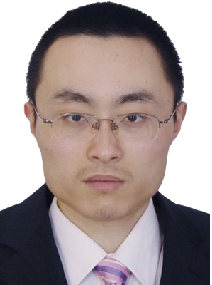
Prof. Yudong Zhang
The University of Leicester, UK
Experience: Prof. Yudong Zhang worked as a postdoc from 2010 to 2012 at Columbia University, USA, and as an Assistant Research Scientist from 2012 to 2013 with the Research Foundation of Mental Hygiene (RFMH), USA. He served as a Full Professor from 2013 to 2017 at Nanjing Normal University. Now he serves as a Chair Professor at the School of Computing and Mathematical Sciences, University of Leicester, UK. He is also (Honorary) Professor at universities in China, India, and Saudi Arabia. His research interests include deep learning and medical image analysis.
He is the Honorary Follow of World Leadership Academy, Fellow of IET, Fellow of EAI, and Fellow of BCS. He is the Senior Member of IEEE, IES, and ACM. He is the Distinguished Speaker of ACM. He was included in Most Cited Chinese Researchers (Computer Science) by Elsevier from 2014 to 2018. He was 2019, 2021 & 2022 recipient of Clarivate Highly Cited Researcher. He is included in World’s Top 2% Scientist by Stanford University from 2020 to 2022. He won the Emerald Citation of Excellence 2017, Information Fusion 2022 Best Paper Award, etc. His three papers are included in UK Research Excellence Framework (REF) 2021.He has (co)authored over 400 peer-reviewed articles in the journals: Ann Oncol, JACC, JAMA Psychiatry, IJIM, Inf Fus, IEEE TFS, IEEE TII, IEEE TIP, IEEE TMI, IEEE IoTJ, Neural Networks, IEEE TITS, Pattern Recognition, IEEE TGRS, IEEE JBHI, IEEE TCSVT, IEEE TETCI, IEEE TCSS, IEEE JSTARS, IEEE TNSRE, IEEE SJ, ACM TKDD, ACM TOMM, IEEE/ACM TCBB, IEEE TCAS-II, IEEE JTEHM, ACM TMIS, etc. There are more than 60 ESI Highly Cited Papers and 6 ESI Hot Papers in his (co)authored publications.
His citation reached 25924 in Google Scholar (h-index 89) and 14412 in Web of Science (h-index 66). He is the editor of Neural Networks, IEEE TITS, IEEE TCSVT, IEEE JBHI, etc. He has conducted many successful industrial projects and academic grants from NIH, Royal Society, GCRF, EPSRC, MRC, BBSRC, Hope, British Council, Fight for Sight, and NSFC. He has given over 120 invited talks at famous universities and top conferences, including Harvard University, University of Birmingham, University of Sheffield, University of Surrey, Manchester Metropolitan University, De Montfort University, Polish Academy of Sciences, University of Warsaw, Hasselt University, etc. He has served as (Co-)Chair for more than 60 international conferences and workshops (including more than 20 IEEE or ACM conferences). His research outputs have been reported by more than 50 news press, such as Reuters, BBC, Telegraph, Mirror, Physics World, UK Today News, EurekAlert! Science News, India Times, Association of Optometrists (AOP) news, Medical Xpress, etc.
Speech Title: Data Processing Theories and Techniques for Medical Image Analysis
Abstract: The field of medical image analysis has witnessed remarkable advancements in recent years, largely attributed to the incredible potential of data processing theories and techniques. This talk aims to provide an overview of our group’s advancements of data processing theories in medical image analysis. The talk will begin with an introduction to deep learning and its vital networks, such as convolutional neural network, advanced pooling networks, graph convolutional networks, attention neural networks, weakly supervised networks, vision transformers, etc. We will explore how these neural networks can be tailored and applied to various medical imaging modalities, including magnetic resonance imaging, computed tomography, and histopathology slides. Furthermore, we will discuss the challenges faced in data processing for medical image analysis, such as limited labelled data, class imbalance, and interpretability, and delve into the theories and techniques employed to mitigate these issues.